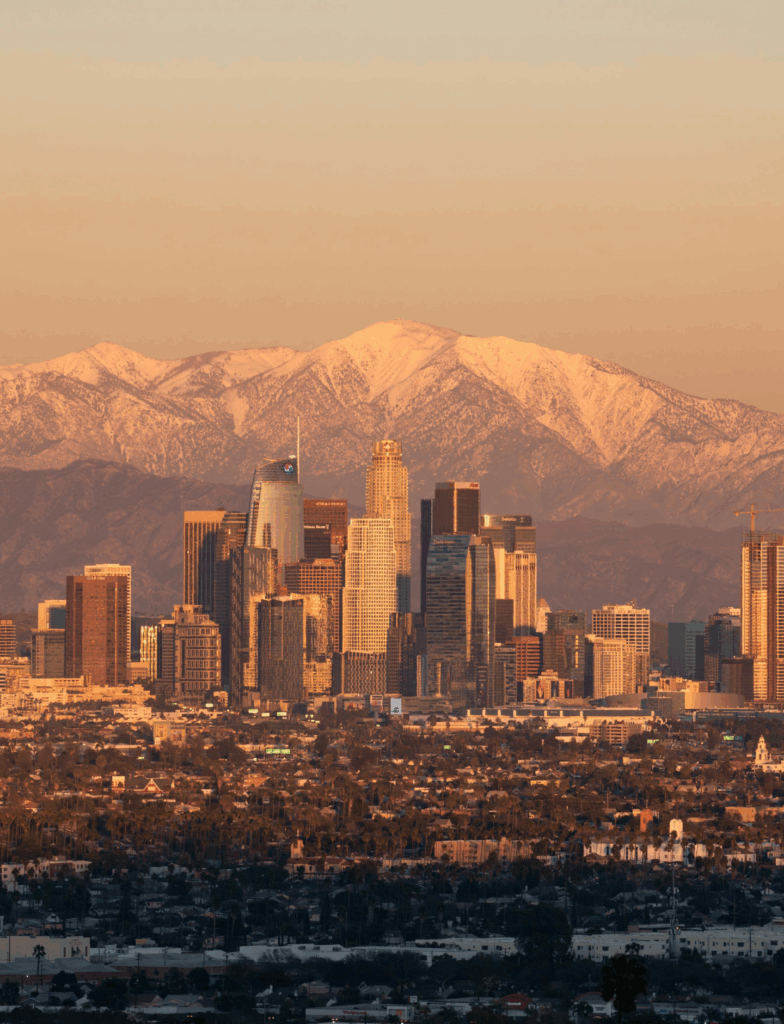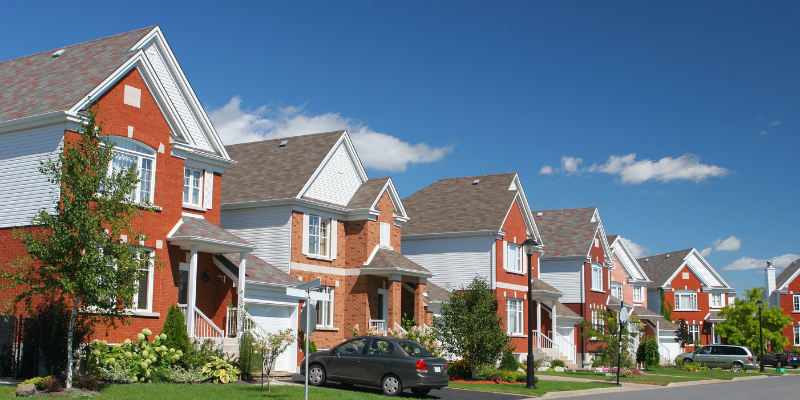
Los Angeles is a city of contrasts, where every neighborhood tells a story. Eazy House Sale explores the best and worst places to live in the City of Angels.
Understanding Crime Rates in Los Angeles
Although Los Angeles is a big city, it is also very diverse, and different areas have different crime rates. There are places that are safer than others, and places that are safer than others. Residents and tourists can get a better sense of how safe an area is by looking at things like violent and property crimes, as well as crime maps and crime data. Taking a broad look at both the total and average crime rates, especially in places like downtown Los Angeles and certain parks, shows important trends. Knowing about these things can help you get around LA’s diverse areas more safely.
Factors Contributing to Violent Crime in Los Angeles
Los Angeles is a small version of the world, with very different socioeconomic situations. These differences often play a big role in the high rates of violent crime in some communities. Poverty and unemployment are two socioeconomic problems that lead to a lot of violent violence. This is especially true in areas where there aren’t many jobs, which makes crime more common as a way to survive. Research and local data often show that crime rates go up when people don’t have enough money, therefore it’s important to deal with these problems as part of any effort to stop crime.
Gang violence is also a big part of the city’s violent crime picture. Los Angeles has a lot of gangs, especially in poorer regions. They keep committing crimes as they fight for control of different locations. The presence of this group typically leads to violent fights, which raises the community’s crime grade on many crime maps. Law enforcement organizations keep these crime maps up to date, so citizens may always see the most recent crime data for their area. This lets them know which neighborhoods are most affected.
Also, systemic problems like not trusting the police can make things worse. Many neighborhoods have bad relationships with the police, which makes people less likely to report crimes. This makes the total crime data less accurate and makes it harder to intervene effectively. Programs that try to reestablish trust between police and the people who live there have been demonstrated to lower violent crime by creating a more cooperative atmosphere where crimes are more often reported and dealt with.
Also, programs that provide educational resources and fun things to do in neighborhoods with high crime rates can be quite helpful in keeping people from committing crimes. These tactics with many parts are necessary to deal with the many things that cause violent crime in Los Angeles.
The Impact of Property Crime on Los Angeles Neighborhoods
Property crime, like burglary, theft, and vandalism, has a big effect on the quality of life in Los Angeles communities and on the people who live there. These crimes have effects that go beyond the money lost right away. They can also damage the health of the community and how safe people feel in their areas. When property crime is common, people tend to feel more scared and anxious. This often leads to people taking more security precautions or even moving to safer sections of LA.
Crime maps that indicate a lot of property crime often point out neighborhoods like downtown LA, where both homes and businesses are stolen from. Because people and things are often moving about in these regions, crooks have more chances to get away with their crimes. Because of how quickly things change in this area, it’s hard for local police to stop these crimes, so they need better surveillance and community watchfulness.
When crime rates are higher in a neighborhood, property values normally go down, which makes the area’s economic problems even worse. As crime rates rise, those who want to buy or rent homes may stay away from these regions. This can make real estate less desirable and hurt efforts to improve neighborhoods. Better security, stronger community involvement, and more up-to-date police procedures have all been viewed as good ways to fight property crime.
Neighborhood watch programs have given people the power to work closely with the police by reporting suspicious behavior, which has led to fewer crimes and better crime statistics in the area. Property crime can also be stopped by getting people involved in their communities through events and making them feel like they are all responsible for each other. Public awareness campaigns and teaching people how to stop crime are important ways to cut down on crime.
In the end, to lower property crime in Los Angeles, we need a balanced approach that includes both police work and community-led efforts to make neighborhoods safer and more lively.
Eazy House Sale helps homeowners sell your home for cash in Los Angeles and nearby cities quickly and hassle-free, providing fair offers and fast closings.
Exploring the Most Dangerous Areas in Los Angeles
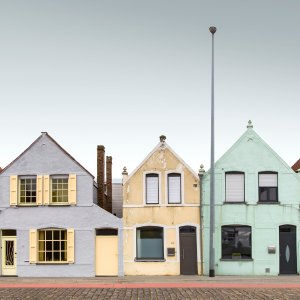
Los Angeles, a thriving city, also has neighborhoods with high crime rates. Understanding the locations of these problematic spots can assist residents and visitors in navigating the city safely. People can make informed selections about where to live or visit by looking into infamous hotspots, analyzing crime data, and taking into account the socioeconomic elements that contribute to these situations. Areas such as downtown Los Angeles and specific parks have gotten special attention due to their relationship with increased crime rates, needing awareness and caution.
Notorious Hotspots: Areas to Be Cautious In Los Angeles, CA
Los Angeles features a diverse array of neighborhoods, each showcasing its distinct personality and set of challenges. Certain regions frequently appear on crime maps as hotspots, reflecting higher overall crime rates. Downtown LA serves as a notable illustration of an area characterized by a significant concentration of both violent and property crimes. The blend of residential, commercial, and entertainment activities in this area of Los Angeles fosters a vibrant atmosphere that, despite its liveliness, also presents notable challenges.
Several elements, including socioeconomic differences, population concentration, and infrastructure challenges, play a role in influencing the crime rates in the area. The varied blend of people, including tourists, business professionals, and locals seeking leisure, introduces additional challenges in ensuring security and safety. Additionally, areas such as Skid Row have a reputation for being unsafe, primarily because of the challenges posed by homelessness and poverty, which often lead to criminal activities. The social challenges in these regions are frequently intensified by restricted access to resources, resulting in crime becoming a means of survival.
Collaborations between public and private sectors are actively pursuing development and intervention strategies aimed at reducing crime rates through enhancements in local conditions; however, significant challenges persist. Parks like MacArthur Park and various public spaces in LA are recognized as areas of concern, necessitating heightened awareness because of their links to crimes that vary from minor theft to more serious violations. The occurrence of unlawful behavior is frequently linked to insufficient law enforcement and community engagement, hindering thorough crime prevention efforts.
Community organizations and city planners are working diligently to revitalize these areas, focusing on reducing crime by implementing improved lighting, advanced surveillance technology, and boosting foot traffic through engaging events and activities. Community engagement, collaboration with law enforcement, and socioeconomic support systems are crucial in tackling the challenges encountered by these neighborhoods, according to local data. Creating a culture of trust and collaboration allows community members to partner with law enforcement for more efficient crime reporting.
As Los Angeles works to address population growth and urban expansion, it is crucial that these initiatives are sustained and enhanced, transforming these well-known areas into safer, more livable neighborhoods.
Identifying the Safest Neighborhoods in Los Angeles
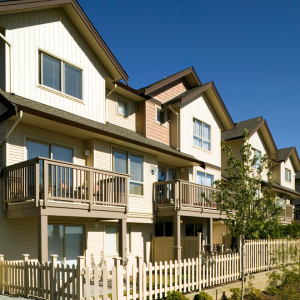
To find the safest places in Los Angeles, you have to look at the different things that make some areas less likely to have crime. The city is known for its busy spots, but some areas stand out because they care about safety and the well-being of their neighbors. These places are usually found by looking at crime statistics and identifying features that show safe places to live. Notably, areas with lower crime rates are often well-watched and backed by an active community, which makes them great choices for people who want to feel secure. In many of these neighborhoods, property managers also play a key role by maintaining well-lit spaces, enforcing security measures, and fostering a sense of community among residents. This part will talk about both the general traits of low-crime places and specific zip codes where safety is very important
Characteristics of Low-Crime Areas in LA
Some things are common in Los Angeles neighborhoods with low crime rates that help them earn their image as safe havens in the city. Strong community involvement is a key trait, where people take part in neighborhood watch programs and events that promote safety and friendship. This participation in the community builds a sense of duty and encourages people to work together to keep things safe and stop criminal activity.
Neighborhoods like Brentwood and Westwood are great examples. They are often highlighted on crime maps for having great safety records, which is because police and residents work together well. Infrastructure and public amenities that are well taken care of also play a big part in making low-crime places safer. Good road conditions, well-lit streets, and clean public areas can discourage illegal behavior by making it harder for criminals to do their work.
The crime rate in an area goes down when families attend parks and other recreational areas that are regularly patrolled. This is because violent and property crimes are less likely to happen. Crime doesn’t happen in these areas because people can get a good education and find work. Crime rates are usually lower in places like Santa Monica and Glendale where people have a lot of schooling and the economy is stable. This is because people there have less reason to commit crimes.
These areas get a lot of help with their social and economic problems, which keeps crime from becoming a necessity for life. So, when people in Los Angeles talk about safety, these neighborhoods come up a lot. They show how working together on community, infrastructure, and the business can lower crime rates and improve everyone’s quality of life.
Top Safe Zip Codes to Consider in Los Angeles
When looking for safe areas in Los Angeles, several zip codes stand out because of their great safety records and quality of life. Beverly Hills is known for its beautiful environment and low crime rates, which are helped by a strong police presence and community watchfulness. The zip code 90210 is also known for these things. People often talk about this region as one of LA’s safest neighborhoods. This is largely because the neighborhood association is active and puts safety and health first.
Another important zip code is 90049, which includes Brentwood. There, low crime rates are made possible by people in the community working together and with the police. People who live in this neighborhood benefit from crime prevention initiatives that use predictive crime data to find and stop possible threats. Brentwood is a popular place for families and anyone looking for peace of mind because they always work to keep the area safe.
People also think that the zip code 90402 in Santa Monica is quite safe. This zip code is known for its beautiful beaches and lively community life. It also benefits from strict law enforcement and community-focused programs. In Santa Monica, regular town hall meetings and public safety forums let people and police talk to each other, which makes sure that safety issues are heard and acted on.
People who live in a region or are thinking about moving there are using digital tools like crime maps and localized applications more and more to get a good idea of crime rates. These kinds of websites give people a lot of information about safety metrics, which helps them make smart choices about where to live.
In conclusion, these zip codes not only provide a safe place to live, but they also show how crime data trends are changing. They show how aggressive policing, involved communities, and economic resiliency can make safe havens in the diverse landscape of Los Angeles.
At Eazy House Sale, we buy houses in West Covina and the surrounding areas, making selling fast, simple, and hassle-free.
Are There Safer Neighborhood Options in LA?
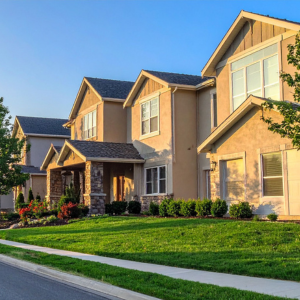
Los Angeles is a city of contrasts, and the level of safety can be very different from one neighborhood to the next. Some communities have gotten a lot of attention because of their high crime rates, but there are definitely places that are safer to live in. By looking at specific crime statistics and learning how things work in the area, you might find places where crime happens less often. This in-depth look at how safe different neighborhoods are helps people who already live in Los Angeles and those who are thinking about moving there make smart choices about where to live. It also helps people understand the city’s overall safety situation better.
Comparing Crime Statistics Across Los Angeles Neighborhoods
Examining crime statistics serves as a vital resource for assessing the safety of neighborhoods in Los Angeles. Considering the city’s extensive and varied landscape, analyzing the patterns and fluctuations in crime rates can offer important perspectives for individuals contemplating a move or those who prioritize local safety. Crime statistics provide insights into both violent and property crimes, giving a detailed perspective on the safety of the area.
In Los Angeles, neighborhoods like Anaheim and specific sections of downtown are recognized for exhibiting elevated crime rates in comparison to other areas. These data points, regularly refreshed and available through public records or online databases, uncover the average crime rates in various neighborhoods, showcasing distinct patterns and trends in local criminal activity. Crime grades given to different areas can reveal how a neighborhood compares to the city average, acting as a valuable reference point for assessing safety levels.
Neighborhoods like Echo Park and Silver Lake frequently attract attention for their crime statistics, owing to their popularity and varied demographics. The vibrancy and cultural richness of these areas can sometimes be overshadowed by fluctuating crime rates, influenced by factors such as local socioeconomic diversity and population density. Regularly analyzing local crime data and statistics allows residents and prospective newcomers to pinpoint safer neighborhoods in Los Angeles, gaining insights into areas that have experienced crime reductions thanks to effective community involvement or heightened law enforcement efforts.
Trends reveal not only the areas where crime has decreased but also highlight the potential impact of various programs or socioeconomic factors that may drive these positive changes. Additionally, having access to real-time crime data enables more informed decision-making. Recent technological innovations offer residents access to digital tools and applications that display crime data in accessible and easy-to-understand formats.
These advancements enhance awareness and readiness, enabling individuals to utilize crime statistics not merely as informational tools but as integral components of their strategic decision-making when selecting locations for residence or property investment within the city. The combination of technology and local law enforcement initiatives creates a proactive strategy for monitoring and preventing crime, providing communities of various sizes with innovative ways to improve their safety and security.
A safer neighborhood begins with a connected community. Working together builds trust and security for all. For more information, Contact Us at Eazy House Sale.
Conclusion of Most Dangerous Areas in Los Angeles
Los Angeles, known for its varied and extensive neighborhoods, presents distinct challenges regarding crime and safety. By grasping the reasons that contribute to elevated crime rates in certain areas, both residents and visitors can make educated decisions regarding their safety. Evaluating overall crime data, examining local crime statistics, and promoting community involvement are essential for decreasing crime in high-risk neighborhoods. The continuous initiatives aimed at enhancing safety in Los Angeles underscore the importance of sustained awareness and proactive strategies, fostering a more secure atmosphere for every resident in this renowned city.
Final Thoughts on Ensuring Safety in Los Angeles
To enhance safety in Los Angeles, it’s crucial to grasp the intricate elements contributing to elevated crime rates in specific neighborhoods and leverage this insight to apply impactful solutions. Although certain neighborhoods face challenges with crime, implementing a thorough strategy for safety can turn these areas into safe havens. Efforts centered around community involvement are essential for lowering crime rates. Encouraging cooperation between community members and police can strengthen neighborhoods, making them more robust in the face of crime.
Establishing trust through regular engagement between the community and law enforcement, along with the introduction of neighborhood watch initiatives, is crucial for fostering a culture of awareness and collaboration. Enhancing public spaces through better lighting, cleanliness, and infrastructure plays a crucial role in minimizing crime opportunities in parks and public areas. Furthermore, tackling socioeconomic inequalities is essential for reducing the occurrence of criminal activities.
Enhancing access to education, job opportunities, and vital services can significantly reduce the factors that frequently contribute to criminal behavior. Initiatives that focus on education and job training can create lasting change, minimizing the likelihood of individuals in high-crime areas turning to criminal activities for survival. Investing in community resources and infrastructure can lead to a revitalization of neighborhoods, effectively deterring crime and enhancing the quality of life for residents.
Los Angeles is actively working to improve safety by leveraging real-time crime data and analytics to forecast and mitigate criminal activities. The incorporation of technology into crime prevention strategies equips residents with current information, enabling them to make informed choices about their living situations and how to safely navigate the city. By integrating modern technology with established community policing methods, LA seeks to foster safer neighborhoods.
To truly enhance safety in the city, it’s essential to adopt a comprehensive strategy that merges innovative solutions with grassroots efforts, tackling both the urgent and enduring issues related to crime. Through these collaborative efforts, Los Angeles is advancing its mission to enhance safety for everyone who resides in this vibrant city.
Need to sell your home? Want to sell fast, skip repairs, and enjoy a hassle-free process? Eazy House Sale can help. We provide fair cash offers, manage every detail, and ensure a smooth transaction. Ready to sell or have questions? Call (855) 915-1382 for a no-obligation cash offer today.
FAQs:
What Are Some of the Safest Neighborhoods in Los Angeles?
Neighborhoods like Brentwood and Westwood are considered some of the safest in Los Angeles. They have active community involvement and robust infrastructure, contributing to their low crime rates.
How Does Socioeconomic Disparity Affect Crime in LA Neighborhoods?
Socioeconomic challenges such as poverty and unemployment contribute to higher crime rates. These issues lead to increased violent crime in economically disadvantaged areas.
How Can Residents Assess the Safety of a Los Angeles Neighborhood?
Residents can use crime maps and area crime data to understand safety dynamics. Analyzing crime statistics can reveal trends in criminal activity, enabling informed decision-making.
What Role Do Gangs Play in Los Angeles’ Crime Landscape?
Gangs significantly impact violent crime as they often vie for territorial control, leading to confrontations that elevate community crime rates. This necessitates ongoing law enforcement efforts to mitigate gang activity.
How Can Property Crime Impact Los Angeles Neighborhoods?
Property crime affects community well-being, leading to decreased property values and increased security measures by residents. This can also contribute to relocation and reduced community engagement.
Helpful Los Angeles Blog Articles
- Sell Your House Directly To The Bank In Los Angeles, CA
- Best and Worst Neighborhoods in Los Angeles, CA
- Los Angeles, CA Neighborhood Map
- Fun Facts About Los Angeles, CA
- Los Angeles, CA Property Tax Rate
- Best Los Angeles, CA Property Managers
- Free Things to Do in Los Angeles, CA
- Los Angeles, CA Cost of living
- Los Angeles, CA Closing Costs Calculator
- Selling Old House in Los Angeles, CA
- What Do You Do When You Inherit A House with A Mortgage in Los Angeles, CA
- How Long To Live In A House Before Selling in Los Angeles, CA
